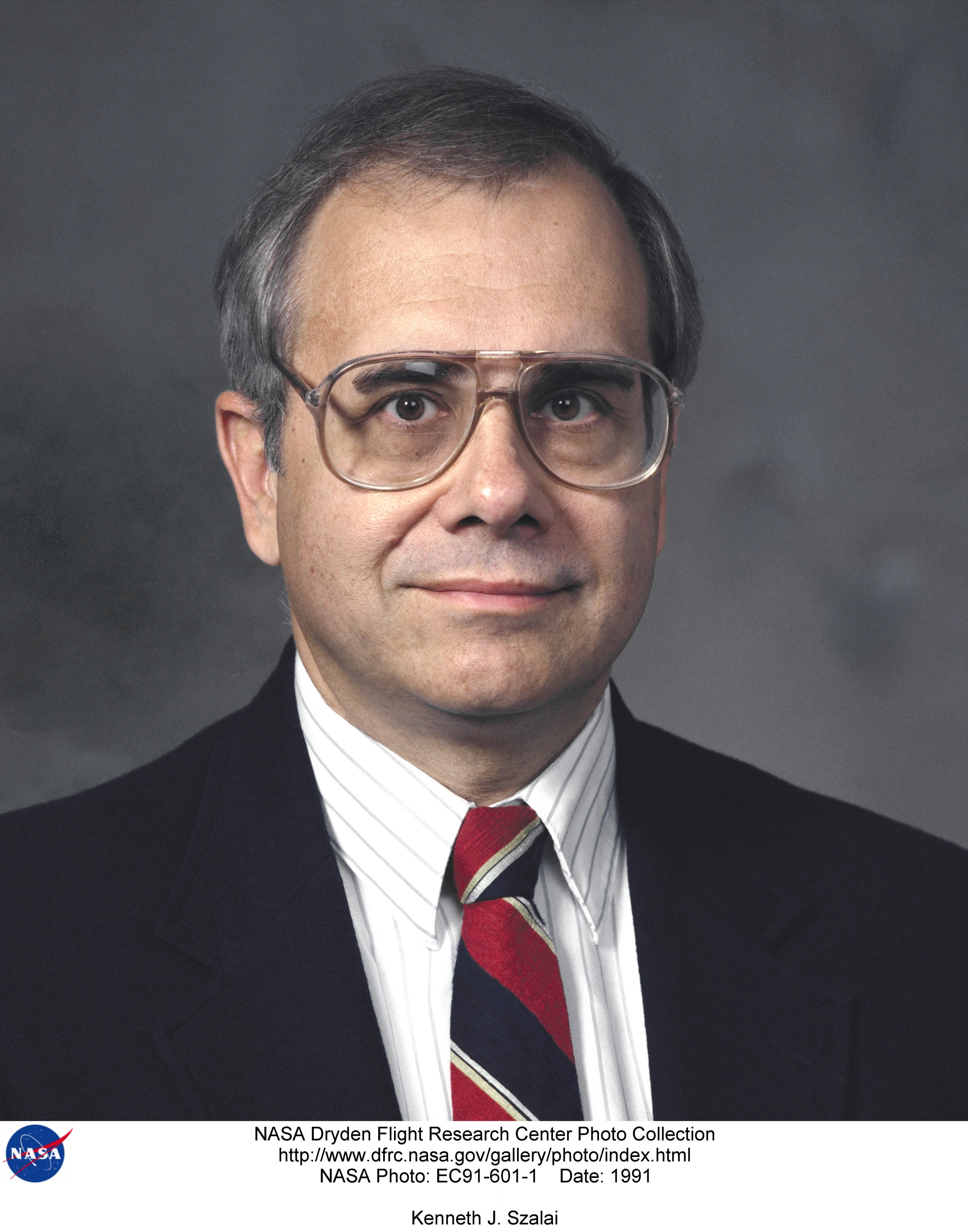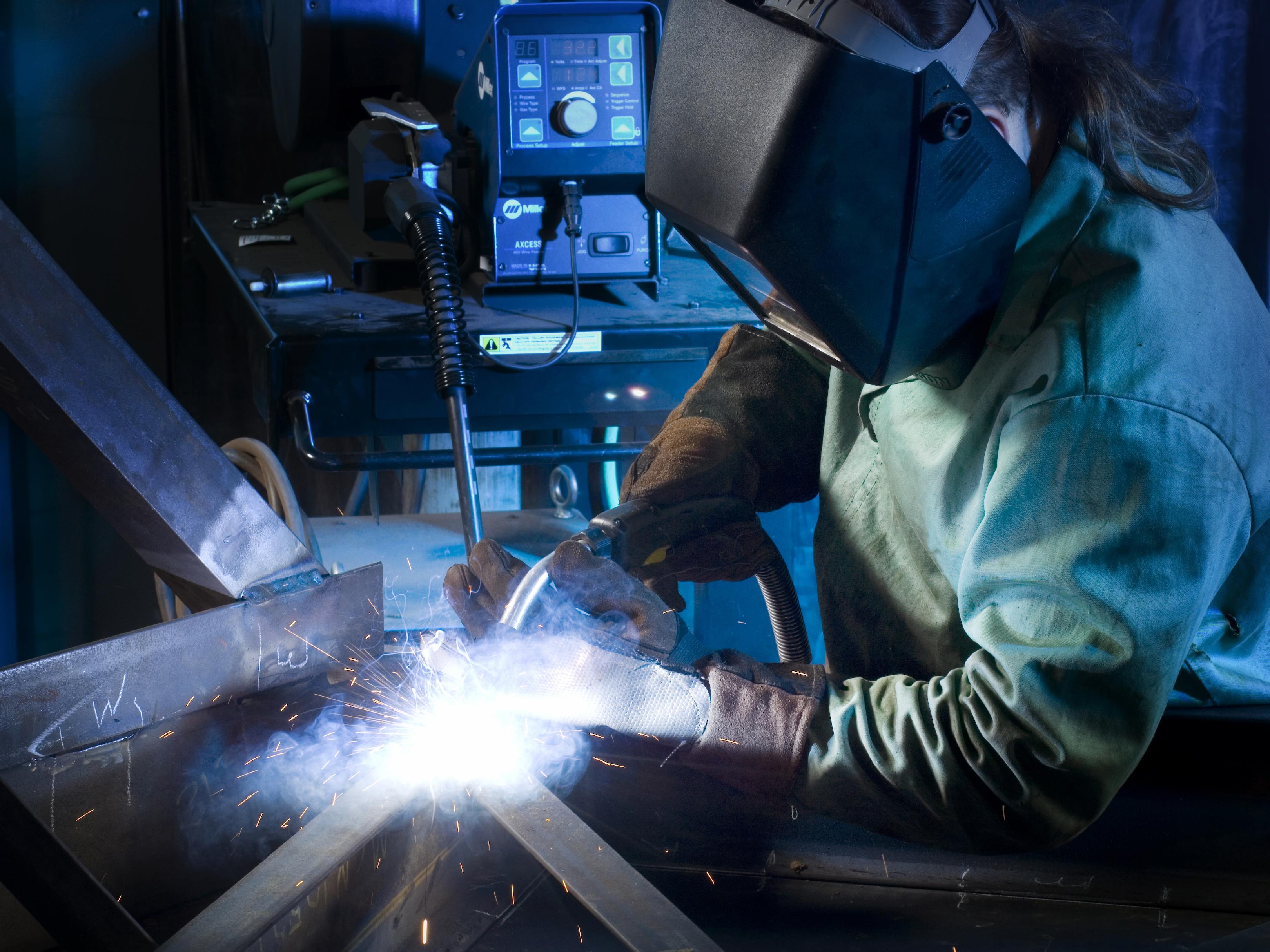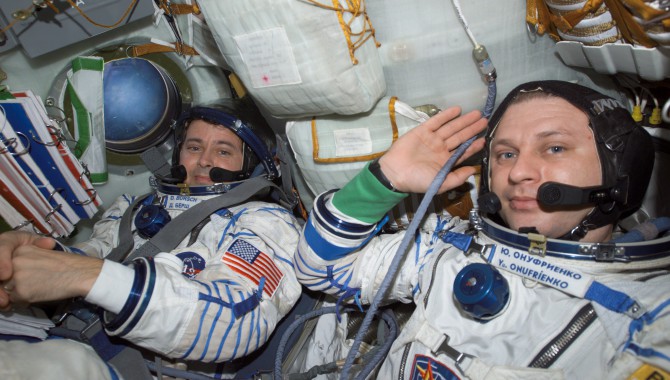
By Alan Thirkettle
From the 1970s until the end of the twentieth century, the European Space Agency (ESA) and NASA cooperated on a range of human space flight programs. At the start of that relationship, ESA had no experience in human space flight whatsoever, while NASA had been through several programs culminating in Apollo and Skylab, and the post-Apollo Space Transportation System (STS, the Space Shuttle) was already approved. ESA committed to develop the Spacelab modular system, the scientific laboratory of the shuttle. In this very successful program, ESA and the European industry learned how to develop and qualify human spacecraft, started an astronaut program, and built many experiments in numerous scientific disciplines.
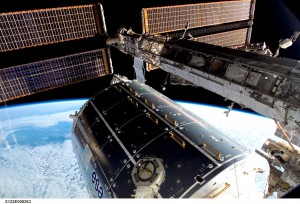
A view of the European Columbus laboratory installed in its new home on the International Space Station. Columbus was launched with Space Shuttle Atlantis in February 2008.
Photo Credit: ESA/NASA
As a result of these ventures, ESA became a qualified human space flight partner. Cooperation with NASA was smooth, controlled, and of mutual benefit: ESA for the learning curve and the end product, NASA for the expansion of the shuttle system into an operational scientific platform.
The International Space Station (ISS) is so far the largest example of international cooperation, certainly in the aerospace world and arguably in the engineering world as a whole. The fact that decisions have to be taken among partners has sometimes been a source of difficulties, but the benefit is clear to see, in terms of both the ISS itself and the understanding developed among the players. Lessons learned from past and present ventures need to be taken into account in setting up the framework for cooperation on future exploration.
The ISS Invitation
In the mid-eighties the ESA member states initiated a series of new programs: the Ariane 5 heavy lift launcher, the Hermes manned space plane, and the Columbus program. The latter consisted of several infrastructure elements: a pressurized module, a man-tended free flyer (to be serviced by Hermes), a service vehicle, and a polar platform. This infrastructure, associated with the NASA-led space station program (“Freedom”), was conceived as a combination of cooperation and autonomy for Europe. U.S. President Ronald Reagan had invited partners to join NASA in working on such a station, and on the basis of the Spacelab experience, ESA accepted the invitation. While Ariane 5 was fully implemented and remains a world leader in carrying cargo to space, Hermes was eventually canceled and the infrastructure program converged to the Columbus laboratory module in the face of economic realities.
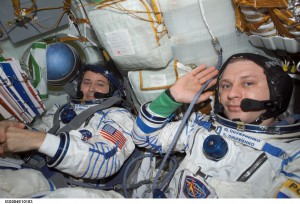
Astronaut Daniel W. Bursch (left) and cosmonaut Yury I. Onufrienko, Expedition Four flight engineer and mission commander respectively, wearing Russian Sokol suits in the Soyuz 3 spacecraft that is docked to the International Space Station.
Photo Credit: NASA
As the station program developed, the basis of cooperation—which also embraced Japan and Canada—became apparent. It is a multilateral venture controlled by a single intergovernment arrangement, beneath which are bilateral implementing agreements between NASA and each of the partners. The overall system architecture and design are under NASA’s leadership with agreed-upon standard documentation, verification procedures, and common hardware elements (such as berthing mechanisms, hatches, module diameters, voltages, and interchangeable payload racks). The partners provide “independent” elements: a robotic system in the case of Canada and module/platform elements in the case of Japan and Europe. These elements interface with the centralized resource systems (power, communications, heat rejection, atmospheric conditioning, habitation, etc.) provided by NASA.
Station resources, including crew time, are shared among the partners in accordance with negotiated relative contribution evaluations. In exchange, the partners pay a corresponding share of the common system operating costs. Partners have their own operational control centers (under NASA oversight) and their own utilization programs. In exchange for provision of all the resource systems, NASA has usage rights to 50 percent of the partner elements.
Cooperation Evolution: Russia Enters into Partnership
After the end of the Cold War, discussions between the United States and Russia led to the introduction of Russia as a new partner on the station. This coincided with a major redesign of the architecture. The existing partners were invited to participate in the changes and given considerable technical visibility, although decisions were largely a bilateral matter between the two major players.
This expansion had a number of consequences, some causing concern and others clearly beneficial. The station architecture was no longer seamless but consisted of two distinct halves—the so-called United States Orbital Segment (USOS), which included the elements of the original partners, and the Russian segment. Different voltages, different life-support systems, separate logistics, and nonstandard hardware (including hatches and berthing mechanisms) added to the complexity. On the positive side, the station gained the experience that the Russians brought—they had operated space stations including Mir for many years—the robustness of alternative transport systems (Progress and Soyuz), and more balanced power sharing between them and NASA. (Eventually, of course, the station was kept alive by the Russian transport systems following the Columbia tragedy. Without Soyuz and Progress, it would certainly have had to be de-manned and potentially abandoned completely.)
Aspects of ESA’s Cooperative Participation
The main ESA contribution, the Columbus laboratory, is a sixteen-rack pressurized module with four external payload attachments. It was launched in February 2008 aboard STS-122. Rather than paying cash for the flight, ESA provided two of the interconnecting nodes of the station, plus other goods and services equal to the value of the launch.
Having been one of the last partners to fully commit to the station, the ESA Columbus module (the full development of which was only finally confirmed at the end of 1995) was to be the last flight in the assembly sequence. This meant a long wait for the European science community, so negotiations for early European use of the station, including the associated launch and retrieval of payloads and short-duration astronaut flights, were conducted. In exchange, ESA undertook to provide the station’s Cupola, a Microgravity Science Glovebox, and a –80 degree freezer system, the so-called Melfi. Another agreement with the Japanese agency led to ESA receiving payload rack structures from Japan in exchange for delivering another Melfi to our Japanese partner. ESA also negotiated a progressively earlier slot in the assembly sequence. The February 2008 launch was some two-and- a-half years ahead of the last assembly sequence launch.
The European share of the common systems operating costs, owed to NASA, is also being “paid in kind” by the provision of flights of the Automated Transfer Vehicle, or ATV, a twenty-ton spacecraft launched from the spaceport in Kourou, French Guiana. The ATV can transport up to eight tons of useful cargo to the ISS and can remove several tons of trash in its destructive reentry. The first of these missions took place from April to September 2008.
There have been several European astronaut flights to ISS to date, both short-duration and longer “increment” flights. 2009 will see a further increment flight, during which Frank de Winne will assume command of the station for the last two months of his stay on board, the first non-American/Russian commander of the ISS.
The control centers of Columbus and the ATV, in Oberpfaffenhofen (Southern Germany) and Toulouse (France) respectively, are both fully commissioned and operated by European ground crews. A utilization program is under way in domains including life science, fluid physics, materials science, solar physics, space technology, and industrial exploitation, and will grow as time passes. Many experiments are conducted jointly among the partners in the different areas of the station, continuing a long tradition of scientific cooperation.
Reflections
For ESA, the Spacelab cooperation was straightforward inasmuch as we were clearly not an equal partner, either in magnitude of task or in experience. While the magnitude of our overall participation is that of a small contributor (measured as 8.3 percent quantitatively), there is closer equality in development competence, as evidenced by the amount of European hardware on board. Operationally, we are comparative newcomers in manned space, but there is consensus that Europe has produced some of the “best ever” astronauts. In order to acknowledge this change in circumstances, an increased degree of consensus management has been appropriate and necessary.
There have been periods, however, when cooperation was more difficult than it should have been. At the turn of the century, NASA, under pressure from the U.S. government following large increases in the projected cost of the station, took a critical internal look at its expenditure and ambitions and, as a result, canceled a number of elements of the station, including the habitation module and the crew rescue vehicle. While the partners were offered “visibility” into the review, which lasted for more than two years, they had no real opportunity to influence its outcome. The decisions were made unilaterally, to the consternation of the other partners.
Europe had spent more than $100 million on cooperation with NASA on the crew rescue vehicle and its predecessor, the X-38. There was no compensation for this investment when NASA canceled that part of the station program. This was a time when the “partnership” was disregarded in favor of the wishes of the United States. Relationships were so difficult for a time that some European governments called the European participation into question. It only survived because the top governing document, the intergovernment arrangement (IGA), has the status of a formal treaty for the European participants. The situation was aggravated by the subsequent loss of Columbia, which added three years of delay to the launch of the European module and hence extra (unforeseen) costs that stretched our ability to continue the program.
Ironically, the loss of Columbia probably led to the beginning of reparation of relationships, because all partners in the human space community feel a common cause in the recovery from such a disaster. By 2004 it was clear that ESA would suffer long delays in the launch of Columbus, and we were desperate to advance the launch of our module to an earlier slot in the assembly sequence. Working groups involving all partners were established to look at the feasibility of this.
NASA engineering and operations communities expressed reluctance, but NASA management decided that the benefit to the partnership outweighed the technical challenges; an advance of the Columbus launch in the sequence was agreed upon by all participants. This was an example of true cooperation and partnership spirit. Today the relationships are as good as they have ever been. This is a function of the state of advancement of the program—it always helps when all partners are on orbit—but also of the people running the program in the various agencies and industries. Personal relationships have been forged that will form the bedrock of future cooperative ventures, notably in the exploration of the moon, Mars, and beyond.
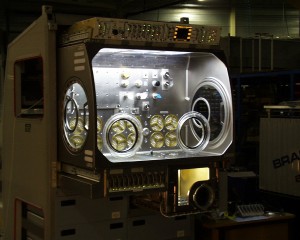
Interior lights illuminate the Microgravity Science Glovebox, developed by the European Space Agency and NASA for use aboard the International Space Station.
Photo Credit: NASA Marshall Space Flight Center
One recent example of cooperation had to do with the computer system in the Russian service module “crashing” in 2007. Russian segment electrical power was lost, and there was a threat that the crew would have to leave the station before the batteries of the Soyuz rescue vehicle depleted. Europe had designed and developed the computers for the Russian partner, and so the European, American, and Russian engineers had to work very quickly and cooperatively, overcoming time differences and physical distances, to retrieve the situation. Although there were strong sensitivities (Europe was—rightly—convinced that “their” computers had not caused the problem, Russia did not want their service module to be seen as the culprit, and NASA did not want their overall system leadership to be called into question), everyone worked extremely closely and found the resolution in a very short time. NASA re-routed power from the USOS to the Russian segment and took over station attitude control. ESA sent spare parts and engineers to Russia to help troubleshoot, Russian engineers scrutinized their designs to establish root cause, and the onboard astronauts and cosmonauts helped with real-time hardware evaluation. This was an example of cooperation happening thanks to a common set of clearly defined, obvious objectives.
Cooperation is a way to achieve mutual objectives in an affordable, non-competitive manner. For huge programs it is the only realistic route to achievement. But there are good and bad paradigms for cooperation. We should strive for balance in the partnership. When partners need each other’s contributions—that is, when the elements are interdependent—then the whole is greater than the sum of the parts, and the relationship is based on a necessarily equal footing. On the other hand, when one partner contributes something that is “nice to have,” rather than essential, the role of that partner in the decision-making process will suffer when times are hard.
The mutual dependence of America and Russia on the ISS, and between ESA and NASA on STS/Spacelab, are examples of mutual need enabling serious problems to be solved cooperatively. Now that all ISS partners have hardware elements in orbit, successful operations depend on overall cooperation, so the bedrock of mutual dependency is there. The strong institutional and personal relationships established during the good and bad years between the various stakeholders are flourishing in that climate of partnership.
About the Author
 |
Alan Thirkettle is the former ESA ISS program manager. |






